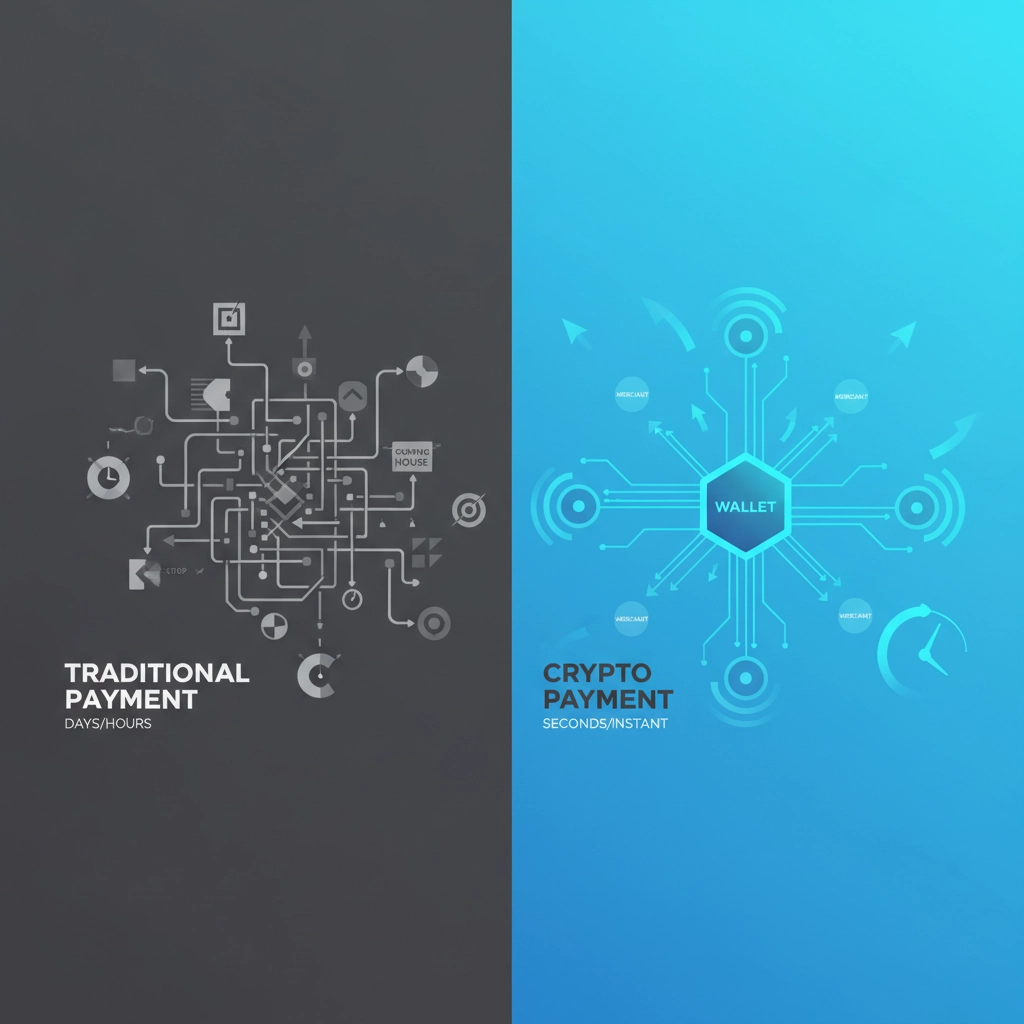Cross-Border Crypto Payments Explained in Under 3 Minutes: The Trillion-Dollar Opportunity PSPs Are Missing
- Kian Jackson
- Sep 27
- 4 min read
Picture this: You're a payment service provider watching $40 trillion in cross-border payments happen annually, but you're only capturing a fraction because your rails are slow, expensive, and frankly outdated.
Meanwhile, stablecoins just processed $32 trillion in transaction volume this year alone: with $6 trillion specifically for payments, not trading.
If you're not paying attention to cross-border crypto payments, you're missing the biggest opportunity in financial services since the invention of the credit card.
What Are Cross-Border Crypto Payments?
Let's strip away the jargon. Cross-border crypto payments are simply international money transfers using blockchain technology instead of traditional banking networks.
Instead of your payment bouncing between correspondent banks, clearing houses, and multiple intermediaries over several days, crypto payments move directly from one digital wallet to another across borders. Think of it as sending an email instead of posting a letter: same outcome, completely different infrastructure.

The process is elegantly simple:
Sender initiates payment from their crypto wallet
Blockchain network validates and processes the transaction
Recipient receives funds in their wallet within minutes
No banks, no waiting, no excessive fees
The key players here are stablecoins: cryptocurrencies pegged to traditional currencies like USD or AUD. They provide the stability businesses need without the volatility of Bitcoin or Ethereum.
Why Traditional Cross-Border Payments Are Broken
Traditional international payments are a relic of the 1970s SWIFT system. Here's what your customers are dealing with:
Speed: 3-5 business days for settlement (longer for complex routes) Cost: 5-10% in fees for remittances, 3-5% for business transfers Transparency: Zero visibility once the payment enters the correspondent banking maze Availability: Limited to business hours in multiple time zones Access: Requires banking relationships in both countries
For businesses operating globally, these limitations aren't just inconvenient: they're expensive. A mid-sized Australian company paying suppliers in Southeast Asia might lose thousands annually just to fees and foreign exchange spreads.
The Trillion-Dollar Market Opportunity
The numbers are staggering, and they're growing fast.
Global cross-border payments represent a $195 trillion annual market. To put that in perspective, that's roughly 10 times Australia's entire GDP happening every single year.
Currently, stablecoins handle about 3% of this market. But projections show they could capture 20% by 2030: that's $60 trillion in annual volume.

The remittance market alone generates hundreds of billions in revenue annually. In Australia, we send over $8 billion overseas each year in personal remittances, with businesses adding significantly more.
Growth indicators that matter:
Stablecoin supply grew from $5 billion to $220 billion in five years
Transaction volume hit $5 trillion in 2024
Nearly 200 million active accounts globally
Consistently representing 50%+ of all blockchain transactions
This isn't speculative growth: it's happening right now, with real businesses and real transactions.
The 10X Advantage: Why Crypto Payments Win
Cross-border crypto payments deliver measurable improvements across every metric that matters to businesses:
Speed and Availability
Traditional: 3-5 business days, limited to banking hours Crypto: 2-60 minutes, 24/7/365 globally
A Sydney-based e-commerce company can pay their Vietnam supplier at 2 AM on Sunday and have the funds arrive before breakfast. Try that with traditional banking.
Cost Efficiency
Traditional systems layer fees at every step: originating bank, correspondent banks, receiving bank, plus foreign exchange spreads that can add 2-4% on top.
Crypto payments typically cost under 1% total, sometimes as low as 0.1% for stablecoin transfers. For a company moving $100,000 monthly, that's $30,000-$50,000 in annual savings.

Transparency and Control
With traditional payments, once money enters the correspondent banking system, it disappears into a black box. Crypto transactions are tracked on-chain in real-time, providing complete visibility and immutable records.
Global Accessibility
Anyone with internet access can receive crypto payments. No need for complex banking relationships or credit facilities in destination countries.
What Most PSPs Are Missing
Here's the uncomfortable truth: while traditional PSPs debate whether crypto is "legitimate," major players are already moving.
Visa launched a tokenised asset platform. Worldpay enables stablecoin payouts. Bank of America is developing its own digital currency platform.
Meanwhile, specialised platforms like Ripple and Stellar are capturing institutional settlement volume with networks that offer speed, automation, and access to new markets.
The opportunity isn't just in offering crypto payment options: it's in becoming the infrastructure that powers this transition.
The Enterprise Adoption Curve
Large enterprises are already experimenting with crypto payments for:
Supply chain payments in emerging markets
Treasury management across multiple currencies
Instant settlement for high-frequency transactions
Access to underbanked markets where traditional rails don't reach effectively
Small to medium businesses are following fast, driven by competitive pressure and cost savings.
Practical Takeaways for Fintech Leaders
If you're running a PSP or fintech, here's your action plan:
Immediate (Next 90 Days):
Evaluate your current cross-border payment costs and timelines
Research regulatory frameworks in your key markets
Identify customer segments most impacted by traditional payment limitations
Short-term (6-12 Months):
Partner with established crypto payment processors
Pilot programs with select business customers
Develop compliance frameworks for digital asset handling
Long-term (12+ Months):
Build native crypto payment capabilities
Integrate stablecoin settlement options
Develop treasury management tools for digital assets

The key is starting now. Every month you delay is market share moving to competitors who recognised this shift earlier.
The Infrastructure Play
The real opportunity isn't just in processing crypto payments: it's in becoming the infrastructure layer that connects traditional finance with digital assets.
Think about companies like Stripe or Square. They didn't just process payments; they became the rails that power e-commerce and mobile payments. The same opportunity exists in cross-border crypto payments.
Early movers can establish:
Direct relationships with enterprises needing global payment solutions
Integration partnerships with accounting and ERP systems
Regulatory expertise that becomes a competitive moat
Network effects as more businesses join their ecosystem
Looking Forward
Cross-border crypto payments aren't coming: they're here. The question isn't whether this transformation will happen, but whether your business will be part of it or disrupted by it.
Stablecoins are becoming the unseen infrastructure powering global commerce, just like TCP/IP became the invisible foundation of the internet. The companies that recognise this transition and build accordingly will capture outsised returns in a trillion-dollar market.
The opportunity is clear. The technology is proven. The only question left is: what's your move?
Ready to explore how cross-border crypto payments could transform your business? At Kian Jackson, we help fintech leaders navigate the intersection of traditional finance and digital innovation. Get in touch to discuss your strategy, or explore our insights on payments innovation and crypto adoption.
The trillion-dollar opportunity is real. The question is whether you'll be part of capturing it.
